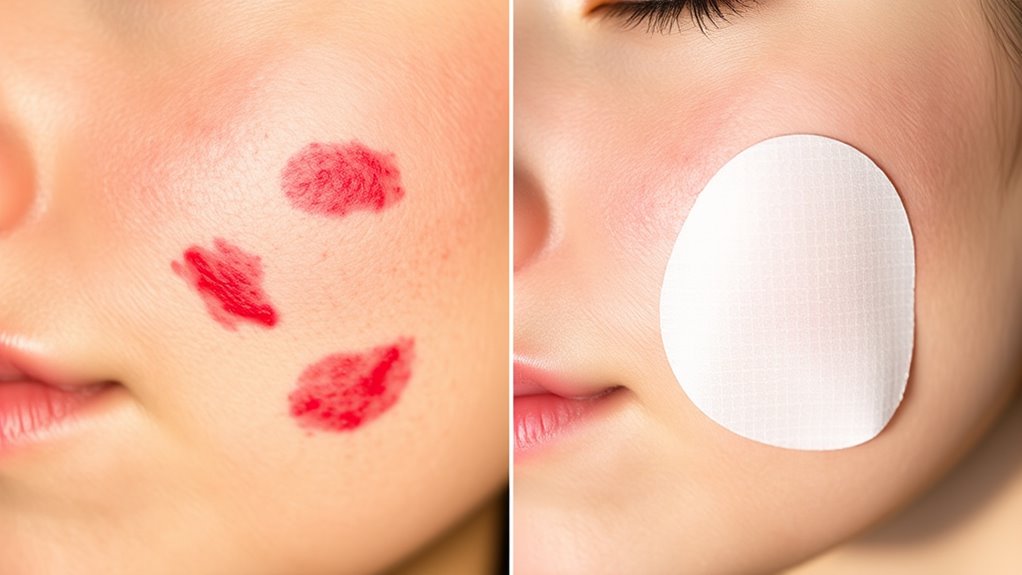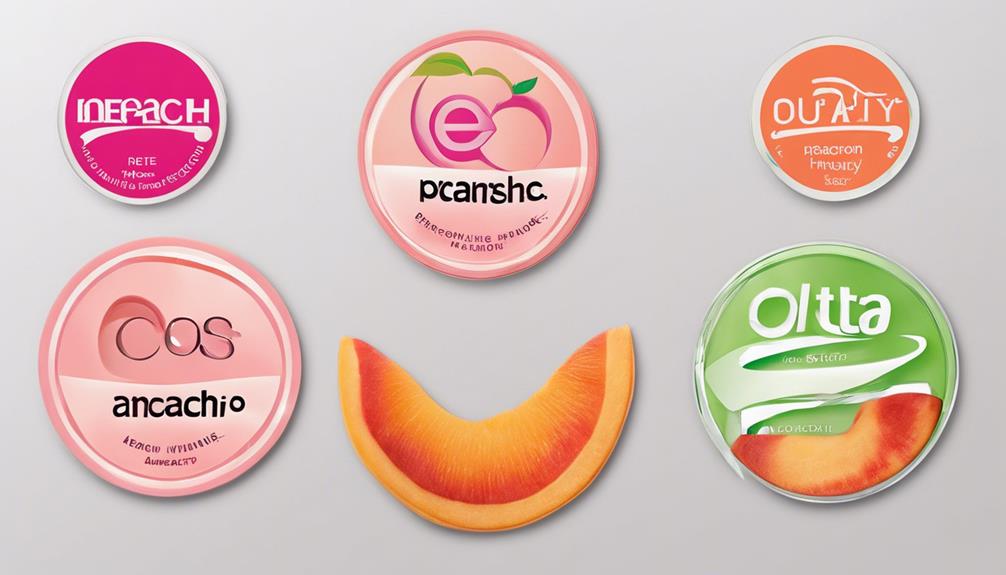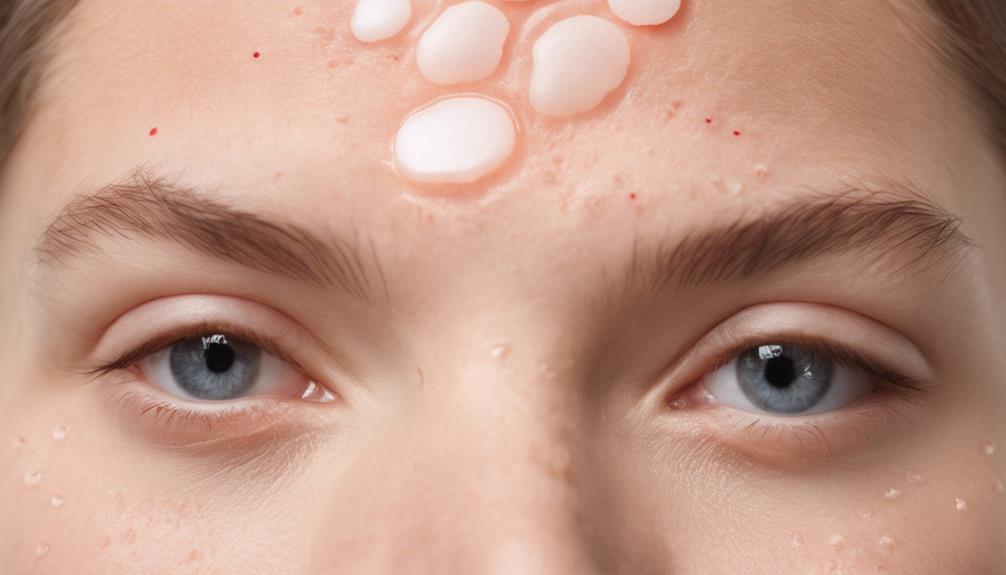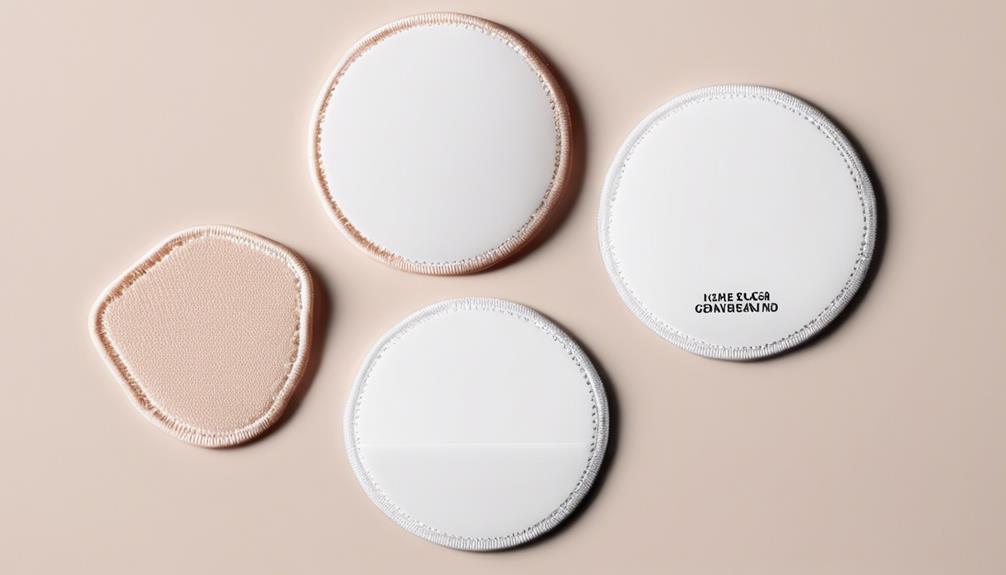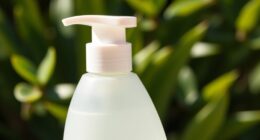Hydrocolloid patches can work wonders for acne, often shrinking blemishes markedly within just a few hours. These patches absorb pus and oil while creating a protective barrier, which can lead to visibly flatter spots in no time. Many users are amazed by the transformation they see, with redness and inflammation reduced considerably. If you’re curious about how to achieve these impressive results and what to expect, there’s more valuable information ahead.
Key Takeaways
- Hydrocolloid patches can visibly reduce the size and inflammation of pimples within hours, providing rapid results for users.
- Users often experience transformation of blemishes into flatter spots, promoting quicker healing and a smoother complexion.
- The protective barrier of the patch minimizes discomfort and itchiness, enhancing overall skin healing.
- Color change in the patch indicates fluid absorption, showcasing its effectiveness in treating acne.
- Regular use discourages picking and touching, further supporting natural healing and preventing scarring.
Understanding Hydrocolloid Patches: How They Work
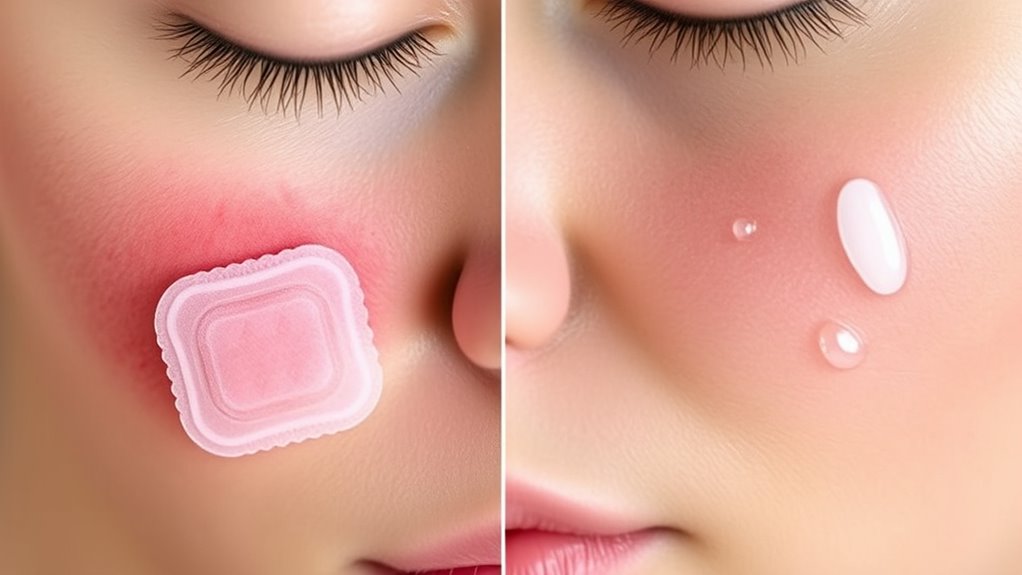
Understanding how hydrocolloid patches work can greatly enhance your skincare routine.
These patches are crafted from hydrophilic polymers, like gelatin and pectin, and feature a thin polyurethane outer layer that locks in moisture. The inner layer absorbs excess fluids, creating a moist environment that promotes healing. Hydrocolloid patches are originally used for wound care like leg ulcers and pressure sores, showcasing their versatility.
Hydrocolloid patches, made from hydrophilic polymers, create a moisture-rich environment that aids in healing by absorbing excess fluids.
Adhesives like silicone guarantee they stick without irritating your skin. When applied, these patches form a protective barrier that retains moisture while sealing the wound, preventing bacteria from entering.
They effectively absorb pus and fluids, speeding up the healing process. This moisture-retentive environment facilitates natural healing and helps reduce inflammation.
Key Benefits of Using Hydrocolloid Patches for Acne
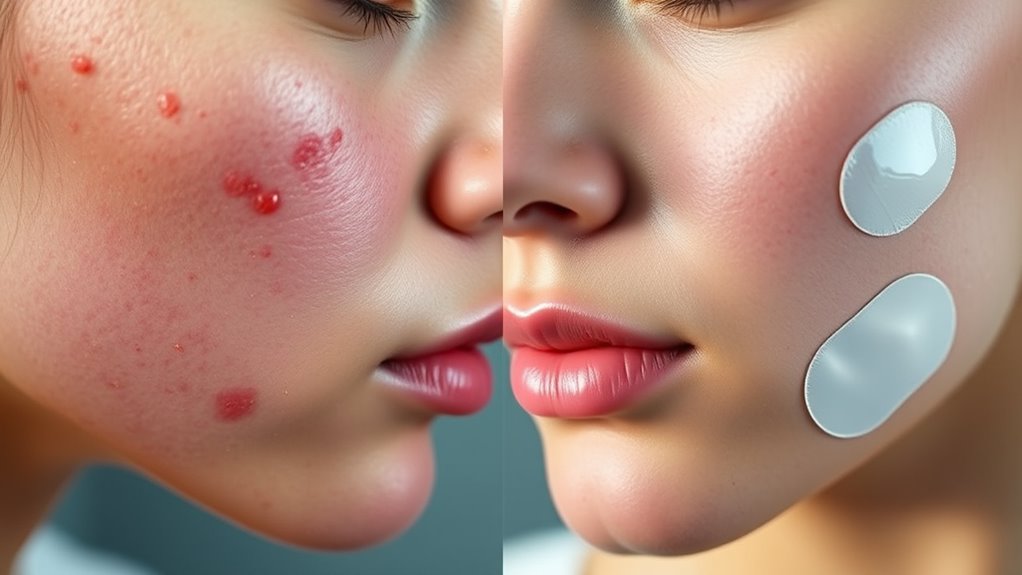
When you incorporate hydrocolloid patches into your skincare routine, you’ll discover a range of benefits specifically for acne treatment.
These patches absorb pus and oil, reducing inflammation and the visible signs of breakouts. They create a protective barrier, shielding your skin from bacteria and irritants. By maintaining a moist healing environment, they promote faster recovery and help minimize scarring. This is particularly important for cystic acne as the patches can help alleviate pain and promote healing for severe breakouts.
Hydrocolloid patches also reduce acne severity, making pimples less noticeable and controlling oiliness. You’ll appreciate their convenience, as they’re easy to apply and can be worn under makeup.
Plus, by discouraging touching and picking, they support natural healing while preventing future breakouts, making them an essential addition to your acne-fighting arsenal.
Types of Acne That Hydrocolloid Patches Can Treat

Hydrocolloid patches are particularly effective for treating specific types of acne, making them a valuable addition to your skincare routine.
These patches work wonders on papules and pustules, absorbing pus and reducing inflammation. If you have surface-level acne, especially lesions that are open or oozing, hydrocolloid patches can help create a moist healing environment. They are also useful for raised pimples with visible pus, aiding in fluid drainage and flattening the pimple. While they can be effective on whiteheads about to rupture, they’re not suitable for cystic or nodular acne, blackheads, or preventing flare-ups. Additionally, these patches are designed to absorb fluids from the pimple, promoting faster healing and minimizing the risk of touching the affected area.
Step-by-Step Instructions for Using Hydrocolloid Patches

To effectively use hydrocolloid patches, start by preparing your skin properly. Clean the affected area with saline solution or water, ensuring it’s free of oils and lotions. Pat your skin dry with a clean towel. Hydrocolloid patches form a gel when they absorb fluid, creating a moist environment that promotes healing.
Now, apply the patch sticky-side down onto the cleansed pimple, pressing gently to secure it. Leave the patch on for several hours, or until it turns white—up to 8 hours for best results.
Apply the patch sticky-side down on the pimple, pressing gently, and leave it on for several hours until it turns white.
Replace the patch once it’s absorbed as much fluid as possible. If irritation occurs, remove the patch gently, peeling in the direction of hair growth.
After removal, clean and dry the area again. Monitor your skin for improvement and reapply if needed.
Factors That Influence the Effectiveness of Hydrocolloid Patches

Effectiveness of hydrocolloid patches hinges on several key factors that can enhance or diminish their performance.
The material composition, including carboxymethylcellulose and polyurethane film, plays a crucial role in moisture absorption and barrier protection. When the patch creates a gel upon contact with bodily fluids, it maintains a moist environment that promotes healing. Hydrocolloid patches are effective for treating pimples and cystic acne, making them a popular choice among users.
Additionally, strong adhesive properties guarantee the patch stays in place, providing continuous protection. However, keep in mind that patches are best for mild to moderate acne, and they may struggle with cystic acne or blackheads.
Finally, sensitive skin can react to the adhesive, so always monitor for irritation. Understanding these factors helps you maximize the benefits when using hydrocolloid patches.
Common Results and What to Expect From Hydrocolloid Patches
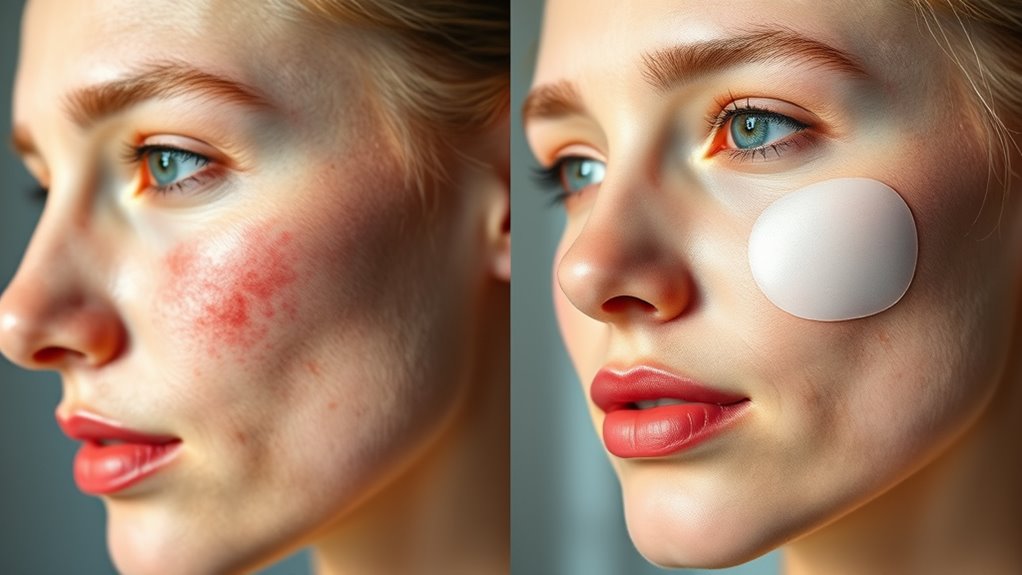
When you apply hydrocolloid patches, you can expect noticeable results within hours. These patches absorb pus and excess fluid, helping reduce the size and inflammation of your pimples considerably. You’ll likely notice that your blemishes transform into flatter spots, promoting quicker healing while minimizing the risk of scarring. The protective barrier they provide also decreases discomfort and itchiness, making your skincare experience more pleasant. Hydrocolloid patches serve as a protective barrier to prevent picking and scratching, which further aids in the healing process. Additionally, incorporating glycolic acid products into your skincare routine can enhance overall skin texture and clarity, complementing the effects of hydrocolloid patches.
Hydrocolloid patches work best on surface-level acne, like whiteheads and papules, so keep that in mind. For ideal results, apply them to clean, dry skin and leave them on until they turn white. Most users find them gentle on the skin, making them a favorable option for treating blemishes.
Real-Life Before-And-After Transformations With Hydrocolloid Patches

While many skincare products promise results, real-life transformations with hydrocolloid patches often speak volumes. Users frequently report significant improvements in their skin after just a few hours of wear. You’ll notice a visible reduction in pimple size and redness, especially with whiteheads. The patches absorb impurities and reduce inflammation, making your skin feel calmer and healthier. Plus, they protect against further irritation, helping to prevent scarring. Whether you wear them overnight or during the day, the convenience is unmatched. The color change of the patch provides clear proof of its effectiveness, so you can see the results for yourself. With hydrocolloid patches, you’re not just hoping for results; you’re witnessing real change. Hydrocolloid patches create a moist environment that draws out impurities, enhancing their efficacy.
Frequently Asked Questions
Can I Use Hydrocolloid Patches on Sensitive Skin?
Yes, you can use hydrocolloid patches on sensitive skin, but it’s important to be cautious.
Look for patches specifically designed for sensitive skin, as they’re less likely to irritate. Always conduct a patch test before regular use to check for reactions.
Clean the area before applying the patch, and avoid using skincare products beforehand for better adhesion.
If irritation occurs, remove the patch immediately and clean the area gently.
How Often Can I Apply Hydrocolloid Patches?
You can apply hydrocolloid patches up to three to four times a week for general use, especially on your nose.
If you’re dealing with pimples, you can use them daily, depending on how severe your breakouts are.
However, keep an eye on your skin—if you notice any irritation, you might need to adjust how often you use them.
Always integrate patches into a complete skincare routine for the best results.
Are Hydrocolloid Patches Suitable for All Skin Types?
You might say hydrocolloid patches are like a gentle hug for your skin.
They’re suitable for all skin types, including sensitive ones, so you won’t have to worry about irritation. With hypoallergenic materials, they minimize allergic reactions while providing a breathable environment for healing.
Whether you have fair or deep skin tones, these patches work effectively, making them a versatile choice for anyone looking to treat blemishes with ease and comfort.
Do Hydrocolloid Patches Expire?
Yes, hydrocolloid patches do expire. They generally have a shelf life of about three years if unopened.
You’ll find the expiration date printed on the packaging, so it’s wise to check that before using them. Store them at room temperature to maintain their effectiveness.
After using a patch, dispose of it properly to minimize environmental impact. Always confirm you’re using patches before their expiration date for the best results!
Can I Wear Makeup Over Hydrocolloid Patches?
Yes, you can wear makeup over hydrocolloid patches! They actually create a smooth surface for your foundation or concealer, making application easier.
Just be careful with the type of makeup you use; avoid oily products that might affect adhesion. Instead, opt for lightweight, matte finishes to blend the patch seamlessly.
Remember to apply makeup gently to avoid dislodging the patch, and it’s best to avoid putting products directly on the patch itself.
Conclusion
In your journey to clearer skin, hydrocolloid patches might just be the gentle nudge you need. These little wonders can transform not just your complexion but also your confidence. As you embrace the before-and-after magic, remember that each patch represents a step toward self-love and acceptance. So, go ahead—let these patches work their charm and reveal the radiant skin that’s been waiting to shine. Your beauty deserves to be celebrated, one patch at a time!
